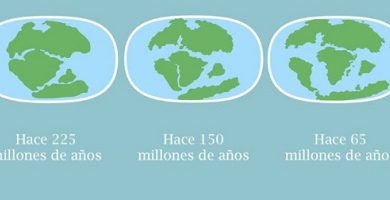What is the circulatory system?
We explain what the circulatory system is and its main functions. In addition, the parts that compose it and its possible diseases.
-
What is the circulatory system?
The circulatory system or circulatory system is a complex internal transport mechanism that possesses in different measure the body of living beings , and that allows the transfer of different nutrients, regulatory substances, chemical defenses and other fundamental substances throughout the body, as well as the collection of toxins, metabolic by-products and other waste materials for disposal.
This type of system exists in both vertebrate and invertebrate animals , although not in the same way. In the case of the former, it carries the blood, a red and iron-rich fluid that allows, among other things, the transfer of the oxygen necessary for obtaining energy. In the case of the latter, hemolymph or other similar substances are transported; in the one of plants, sap.
The circulatory system of the human body includes a vast network of blood ducts known as capillaries , which connect to a larger one composed of veins and arteries. In the center of everything, a muscle pump known as the heart. When we cut ourselves or hurt, the blood gushes because some (usually smaller) section of the net is violated. Luckily, the cells responsible for repairing the tissue and stop minor bleeding are also transported in the blood .
-
Function of the circulatory system

As mentioned, the function of the circulatory system is key: keep the blood going to oxygenate the body and preserve the life of the tissues. If some tissue were isolated from this vast blood network, some member or organ, their cells would suffer from lack of oxygen and die. This is known as ischemia.
In the same way, this device has the mission of communicating the whole body, allowing the displacement of chemical substances of diverse nature , such as hormones (to regulate the activity of the body), white blood cells (and other defensive cells), or the necessary nutrients to produce new cells and tissues (carbohydrates, proteins and lipids ). Even the medicines we take or the injections we receive use this transport system to get where they are required.
Finally, the blood in circulation also passes through certain filters, such as the liver, where it is stripped of toxins, pollutants and substances resulting from metabolism . The circulatory system is, at the same time, a channel for nutrition and waste collection.
-
Parts of the circulatory system

The circulatory system consists essentially of:
- Capillaries . Small branches of the blood network that reach the most hidden corners of the body. No tissue in the body is left out of the blood flow. Some capillaries may be thinner than human hair.
- Arteries . One of the two types of major blood ducts is characterized by bringing freshly oxygenated blood from the lungs to the heart and from there to the rest of the body. They contain the reddest blood (due to a pigment called hemoglobin). An injury to an artery can be serious, since the volume of blood that is transported through them is very large, and does not always give time to repair the wound to prevent bleeding.
- Veins . Unlike the arteries, these major ducts contain blood without oxygenation, that is, the one that undertakes the journey back to the heart and then to the lungs, to resume the cycle. Like arteries, they are bulky ducts and a cut or blockage in the veins is usually lethal.
- Heart . The pump that keeps the blood in constant motion, is a muscular and hollow organ, which weighs about 300 grams and contains four cavities: two atria and two ventricles. This construction prevents venous and arterial blood from mixing, since each one is driven to a different destination. The human heart pumps about five liters of blood per minute, which means that in about 70 years of life it pumps about 2600 million times, with a tiny break between beat and beat of just 0.4 seconds.
-
Diseases of the circulatory system

The circulatory system may suffer from diseases such as:
- A r teriosclerosis . A medical condition that consists of the accumulation of fatty plaques and other substances in the walls of the arteries, solidifying and decreasing blood flow, which slows down the circulation and requires more cardiac effort.
- Hypertension . Due to many possible causes, it consists of an excess of force in the heartbeat, which sends the blood with great intensity through the arteries, possibly breaking some capillary and producing a stroke, or depleting the heart and leading to a heart attack.
- Ischaemia . They usually affect the heart or brain, but also other organs or body members. They occur when something obstructs the flow of blood, causing some part of the body not to receive enough blood and begin to die.





